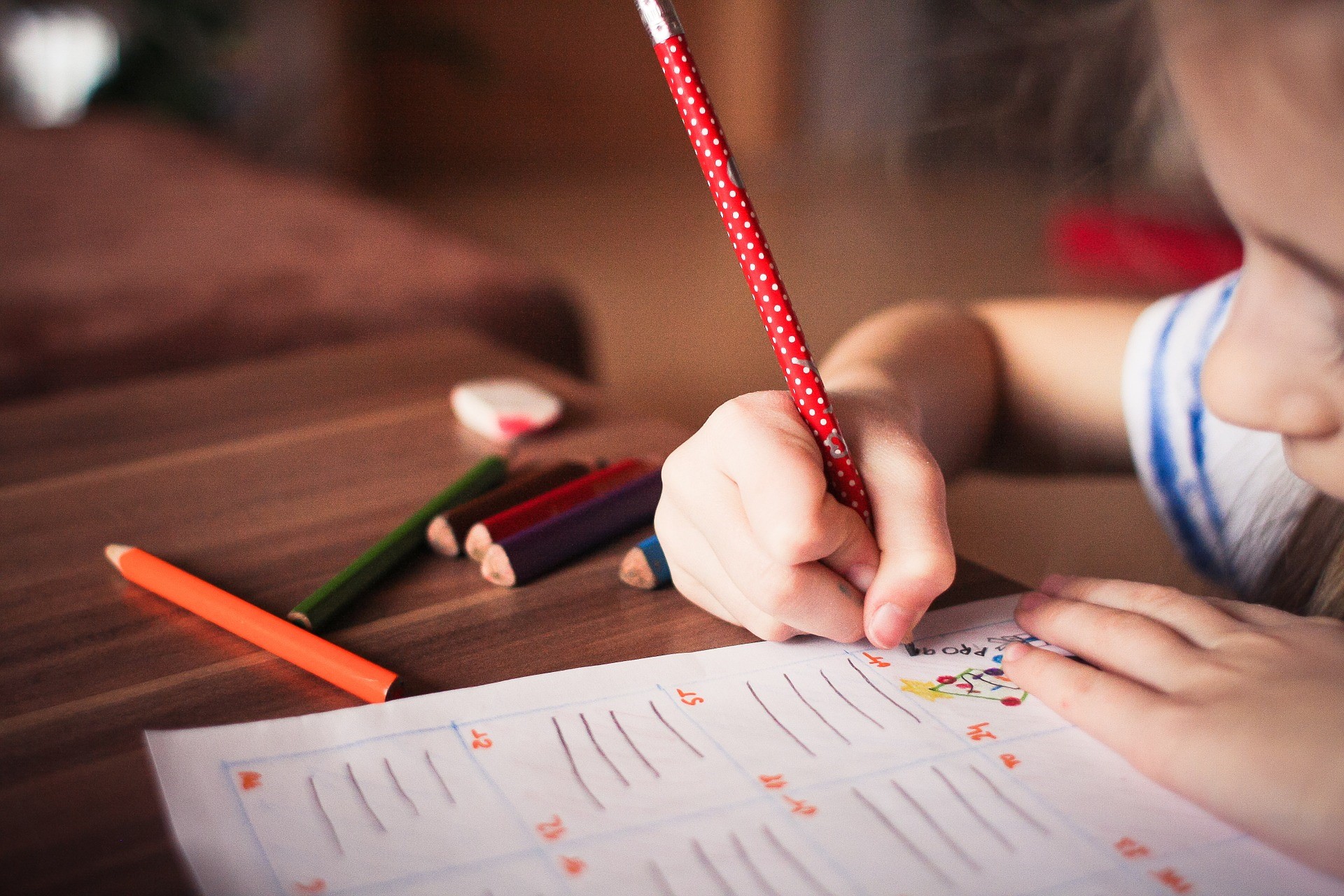Category Archives for "Blog"
Posts that have edge-case related tests
Posts that have edge-case related tests

We’ve all heard about or are experiencing first hand the recent reforms to the education system, starting with the way in which 16-year-olds are tested at the end of year 11.
Teens are being challenged like never before, so it is important to know how the new GCSEs work, to understand what students are experiencing this summer.
The government wanted to make these changes so that the new GCSEs would be more ‘demanding and challenging’ for students. The new, two-year course aligns more with the essay based, analytical and evaluative skills needed at A-level. This is better preparing students for their future.
It also makes tests ‘fairer’, the government argues, through the limited coursework, there is across the curriculum. Previously, coursework has been varied and dependent on the school’s teaching methods. This way, everyone has the same chance at the end of two years to show their skills off in an exam.
The government changed the grading system to give more opportunity for students of all abilities to achieve higher. Students may now achieve a standard or a strong pass, allowing those who achieved a grade C under the old system to be rewarded a higher grade. Similarly, higher achieving students can now strive further for something higher than an A*, so a level 9 was created.
Firstly, grades are different. Instead of A*-U grades, they have been replaced with 9-1, where nine is the highest grade achievable. A grade 9 will be harder to achieve than an A* and, now, both a grade 4 and 5 is viewed as a pass. A 4 will be a standard pass and a 5 will be a strong pass. Pupils will need to re-take English Language and Maths exams in the next years if they don’t achieve a 4 or above.
Coursework is also different too. Only in subjects where it is crucial to show skill, such as drama and dance. This makes the final exam at the end of the two-year course more important than ever.
Other changes will include compulsory double or triple science (foundation or higher), a single science will no longer be available.
One thing to remember in the face of the new GCSEs is that we are all in this together. This is new to every parent; student and teacher so don’t panic!
Prepare for an exam in whichever way is best for you; be it flashcards, posters, past papers or any other way that makes you comfortable. Little and often is always good when revising, and be sure to take necessary breaks.
Remember, you have a great long summer ahead of you, which will make the work you put in now all the more worthwhile!
You can read more about this topic on the AQA website. Click Here.
Harriet Nokes,
GCSE Tutor at StudyBox
Why not contact your local StudyBox GCSE tuition centre for a Free Trial.
More important GCSE information. Click Here.

Creative writing is important for children to learn as it promotes imagination and helps them to write in a structured and organised style. These skills will help when they have to take exams – such as their SATs and GCSE’s.
Creative writing isn’t just about writing stories; it also involves writing letters, instructions and persuasive pieces, just to name a few.
These are skills they can use later on when writing CVs for future jobs or for composing emails to future bosses.
Not every child enjoys creative writing and many are reluctant at first. To combat this, I let the students choose what type of writing they want to complete, (fables, myths, traditional stories, letters, instructions or explanations). This helps to get the child excited about working on the piece and gets them involved.
However, some children are so reluctant that they don’t want to choose anything. If this is the case, I ask them what they’re already doing at school and choose the type of writing that best matches this.
Children don’t often want to plan their writing and are more interested in starting their work straight away. The benefit of encouraging the child to plan is that it helps them to organise their ideas and to know exactly what they are going to write about.
To help children plan, I write down prompt questions on the planning sheets that come with the task, e.g.
When working on one type of writing children can become frustrated and bored. To avoid this, we use different types each week that help them write in different styles for the same topic. For example, in myths, they can complete a character plan one week and a poster, diary entry or a report about that character the next week. This prevents students from feeling like they’re just doing the same thing every week and keeps them interested in their own pieces of work as it keeps evolving.
One of my current students was very reluctant to complete creative writing tasks as he didn’t enjoy it and found it boring. However, after weeks of working on his writing, he has started to enjoy creating his own stories and even does them at home and brings them in for us to read. He likes coming up with characters – especially villains – and is currently working on his use of description in sentences. He is just one example of a student who has progressed well in creative writing during his lessons at StudyBox.
Check out our blog which explains the importance of reading. Click here!
For a free trial at one of our StudyBox Tuition centres, click here.
How to prepare for Mock Exams. Click Here.
Annabel Yates
English Tutor, StudyBox

In a fast-changing world where the most valuable skill you have is your knowledge, a good education is no longer just required, it’s essential.
Every day we hear about new inventions such as driverless cars and AI robots that can answer questions and solve problems.
These new inventions eliminate the need for humans to perform these tasks.
Many current jobs will soon vanish leaving those without adequate education struggling to find employment without going back to school.
The need for our children to expand their ability to think and learn new skills has become an essential goal for most parents.
Teaching our children, the importance of learning starts at home.
We can encourage them to seek out and explore topics they are passionate about and foster an inquisitive personality.
Learning is not just about teaching children the curriculum. It is a process of experiences that lead them to the great “aha” moments of life.
It’s important to teach children to learn from their mistakes and remove the emphasis of getting things right the first time.
Most things in the real world come from trial and error, therefore we should encourage our children to try many different approaches.
There is always going to be a need for core skill in English Maths and Science.
English helps us to use our imagination and creativity. It gives us essential skills, reading and writing, and how to communicate effectively.
Maths teaches us skills such as problem solving, analysing data, communication & logical thinking.
Simple maths skills are used every day in shopping, baking, journey planning and driving.
Science teaches skills through conducting experiments and forming conclusions, and this encourages the brain to think independently and outside the box. You can learn more about the importance of Science, here.
For more information on how to help your children achieve their full potential, visit our website.
It can be hard adjusting from Primary school to Secondary school. Click here.

It is common that children learn quicker than Adults. A child’s vocabulary expands as they grow but, there are some simple ways to speed things up and help them gain an advantage.
You can very easily incorporate these little activities in everyday life to help with this process.
The fun thing about kids being quick learners is that you can teach them new things every day. You should aim to teach them a new word every day. The way you can do this is by making sure they see or read the word a few times that day. For example, you can write the word on a sticky note and paste it on the fridge or on a mirror. Every time they go to get a snack or to look at themselves, a glance at that word will help them remember it.
Now that your child knows a new word, it is important that you teach them its proper use and meaning too. Otherwise, the word won’t be of any benefit. There are many ways you can do this. For some children, it could be as simple as reading out the meaning from a dictionary. However, that wouldn’t be very effective because the child is likely to forget the meaning a few days later.
An easier way can be to describe the word through a story. Make connections with the meaning of the words. Try to paint an image in your child’s mind so that every time they think of that specific word, they get a picture in their mind and hence, they will be able to use the word with its proper meaning. Give relatable examples. When you see a real-life example of the word, show it your child. All these little tips will engrave the word along with the meaning in your child’s brain.
At first, you might prefer using easy words so it’s easier for them to understand. Change this and start using ‘grown-up’ words with them. At first, they might be confused but they will try to figure out the meaning. If it’s hard for them to understand, you can explain that hearing new words in everyday sentences would make it easier for them to know how to use a word properly.
Upgrade the bedtime stories. Buy books for older children that will have new words. Otherwise, you can use the same old stories but try incorporating new words. Since your child will be used to listening to the story, he/she will know the actual meaning. This way when they will hear a new word, they would still understand but at the same time, learn something new.
Expanding your child’s vocabulary is a very simple task. You only need to start adding effort to everyday activities.
For more information please book a Free trial at your local StudyBox Tuition centre.
Help your child with their spelling! Click Here.

SATs exams are taken by year 2 and year 6 students. It helps the students, as well as the parent, know where the child stands. Along with this the more important role of these SATs is that it judges the school in comparison with the National Curriculum to find out how the school is performing. SATs help maintain a quality education throughout all primary schools.
SATs have developed a pretty intimidating image. However, it is not a very difficult test. You can easily help your child ace it with little effort.
SATs for primary students take place during May. This means your child would appear for the exam during the summer term in school. It will be a basic level test that would test the knowledge your child learnt at school.
The exam has two parts. One of these is held at year 2, when the children are aged 6-7 years. Second part of the tests is in year 6 when the children 10-11 years old. For both these exams, the contents include English grammar, English reading and Mathematics.
You don’t need to especially worry about preparing your child for these particular exams. In fact it will be better if you don’t spend extra time teaching them before the exam. This way you can find out the accurate results of how much your child learnt by their own in school. If you want your child to score good in the SATs, make sure you help them throughout the years every single day. Help them understand concepts when they learn them. Making them cram a few days before SATs just so they score good will not be an effective method of teaching. Secondly, since the results will also be a representation of the school performance, the school teachers will provide most of the preparation material and help.
If you want to help your child, you should incorporate activities in everyday habits like mental math games, story reading, etc. Try to help your child learn new words. To prevent your child from panicking during the SATs, make them attempt past papers that you find online.
Firstly, you should not worry about bad results. It will not affect your child’s admission procedures in the future. The exam’s sole purpose is to find out how well the school teaches and how much your child learns. It will be a comparison of same aged children who would have received similar education up till this point. If your child scores badly, it would mean you need to help them cope up since they are lagging behind the rest of their mates.
The result is calculated in such a way that a score below 100 would mean below average performance in that particular section. Similarly, a score above hundred would indicate over average performance where as a score of 100 will show that your child’s performances is as expected at this age.
Want a free trial at StudyBox Tuition London? Click here.
Have you heard about the changes within SATs and GCSE? Click here.

A phonic screening test is a type of test that is conducted to evaluate whether a child has learned phonic decoding or not. This will be done by comparing the results to a specified standard. The results of the test will also highlight the children who still need helps for the improvement in their skills. Support will be provided by the government or the parents to that children. However, if the child passes it, it will mean that they have a detailed understanding of the phonics.
The phonics test was introduced and implemented in June 2012. The test is designed in a way that it effectively highlights the current phonic information of the child. Teachers and parents will be able to know whether the child is progressing at a satisfied pace or not.
The phonics check consists of two different sections. These sections contain 40 words check as a whole that are asked to assess the current knowledge related to phonics. Also, it will highlight the knowledge attained through the reception and year 1. The child will have to read four different words from a single page to the teacher to complete the test.
There is a common question in the minds of parents related to the compulsion and the type of phonic check. The answer to this question is, it is not a formal process of analyzing the abilities of your child. Instead, it is used to analyze the skill or learning level of the child. This is done just to make sure that they are performing up to the mark. Before the start of the activity, children will be asked to practice few words so that they can have a better understanding of the activity which will be carried out.
The phonics check is conducted to check certain points which are explained below:
The phonics check includes some words that are nonsense and pseudo. These are basically those type of words that are decodable i.e. there is no meaning attached to them and they are not the actual words e.g. snorb or brip. The pseudo-words or the nonsense words are included into the test to analyze whether the child can recognize them or not. They are usually shown to the kids with a picture of a monster and they have to tell their teacher about the details of the monster.
For a free trial please contact your local StudyBox Tuition Centre.
Want to learn more about Phonics and Sound Patterns? Click here.

SPAG stands for spelling, punctuation, and grammar. SPAG is useful for every child due to several reasons. The consideration of grammar, spelling, and punctuation is essential in every aspect of the life. Apart from developing the cognitive skills and learning abilities, there is a need to write and produce the thoughts in an effective way. Just understanding a concept is not enough, learning to write it in a right way is also important. The quality of written communication will be increased only by considering SPAG.
As your children are in the age of learning, they have the ability to learn all the new concepts and techniques. Considering SPAG for your children should be done due to the following reasons:
Your child needs to master several skills to become a person with all the expertise. One of the most important aspects to master is to have the right grip on the SPAG. Text communication is important no matter if they are doing it for some informal activity or for solving formal exams. The right written communication is the key to their success whether academic or professional. The effective knowledge of SPAG will help them in understanding the right use of every single word. This will further allow them to communicate in an effective way.
As far as the short term success is concerned, the ability to spell a word in a right way, the ability to use the punctuation at the right point and ability to write with the appropriate grammar is essential for the assessment process. Their success will depend on the right usage of SPAG.
Consider this scenario as in the example where you child will be attempting an essay question. The question solved with the wrong grammar and punctuation will not get good marks for them. On the other hand, if it is solved with good punctuation and grammar, it will be easier for the examiner to read it. Also, it will make the content of your child much more persuasive and engaging.
If you are planning to teach your children about SPAG, it should be noted that relying on the applications will not resolve the issue. There are times when these applications suggest something wrong even if they are right. These corrections are often misleading and will have a negative impact on your children. This is why there is a need to monitor the learning process.
For more information on how StudyBox Tuition can help your child with SPAG please contact us for a Free Trial
How to tell if your child needs a tutor? Click here.

To attend the prestigious Grammar schools your child will have to pass the 11 plus test. The 11 plus test is taken early in the last year of the primary school. Parents often think about whether they should do it and how to prepare for the test. To help you, we have a guide that will increase the chances of success for your child.
Take a look at the tips that will help your child pass the 11 plus test.
There are 2 boards that administer the 11+ test, Center for Evaluation and Monitoring (CEM) and Granada Learning (GL). The location of your house will determine the test your child will appear for. Though the format of the exam is similar, the material your child needs to study is different.
No student can pass an exam without studying for it. For passing the 11+ exam, children will need a regular study routine. They must start the preparation 12 months before the exam. With the help of a study schedule, your child can identify their weaknesses and strengths. So, the study schedule must be well planned.
On the other hand, this doesn’t mean you should burden your child with studies. According to experts, it is better to space out learning plan into small amounts. This is will make sure your child is not overwhelmed. At the age of 10 or 11 years, children have trouble focusing on study for more than half an hour. This means half an hour study every night is what your child needs.
Irrespective of the Exam Board that administers your child’s test, they will be tested on the same subjects. The subjects include:
The learning plan of your child must cover all the topics. For English the following topics will be tested:
You can work on these topics with your child by writing and reading exercises.
As far as non-verbal reasoning is concerned, it will include topics about shapes and spatial awareness. You can focus on studying mirror images, addition and subtraction and various Maths games. They will help your child prepare for non-verbal reasoning.
Moreover, for verbal reasoning, your child will be asked different questions. You can help your child build vocabulary and practice papers can be of huge help. For Maths, your child must have a solid understanding of numeracy and Maths concepts. This will include the material covered in the Key Stage 2 of Maths course.
The 11+ exam has 2 question formats, standard and multiple. The multiple choice question includes selecting the correct answer from given options. While the standard format requires a written format. Your child must prepare for both the formats.
Therefore, it is the extra effort that makes a real difference. For passing the 11+ exam, these tips are what you need.
For more information on how StudyBox Tuition can help prepare your child, please request a Free Trial
Why is mental maths so important? Click here.

Does your child struggle to do homework?
Do you have to push them in doing it?
Have you tried to help but end up arguing?
As a result if, you answered yes, it’s probably time to get the help from a tutor.
Most children at some point will display signs that they are struggling to keep up with schoolwork or homework due to a number of reasons.
Not all are signs students need extra help, therefore we have put together a shortlist to help you find signs that your child probably needs a tutor.
1. The homework excuses:
Your child may exhibit extreme emotions when it’s time for homework. first of all, they will try to avoid the situation by doing anything else.
2. Avoiding school:
Not wanting to go to school can be another sign that your child is finding things difficult, as a result, they may need some extra support.
3. Not doing well in tests:
A bad score in one test may be a temporary issue, consequently, bad test scores on a regular basis can indicate a bigger problem.
4. Loss of confidence:
Avoidance of schoolwork is usually a sign that your child has a loss of confidence, therefore it is important to restore confidence quickly.
5. Poor time management:
Time management is the key to get success. A student who has issues in managing their time and getting homework done will benefit from a tutor.
6. Hopelessness:
Especially relevant is to look for signs of hopelessness. This will include signs of getting disappointed and not having enough confidence.
Interested in after-school tuition? Sign up for your free trial here.
Want to keep your child motivated during school breaks? Click here.
Preparing for an upcoming exam? Click here.

There is a specific part of the brain that performs mental maths but if it is not developed properly at an early age, it can become a challenging task.
For this reason, it is important to develop the ability to do mental maths in children while they are still young.
The best age considered for this is between 5 to 10 years.
This will develop their ability to perform basic arithmetic rules at speed without using pencil or paper.
• Enhances children’s ability to concentrate.
• It stimulates children’s interest in maths.
• Improves the self-confidence of the child.
• Helps with the application skills in maths.
• Helps to reduce mistakes in problem-solving.
• Strongly associated with better memory skills.
• It stimulates both sides of the brain.
This means that students will be able to perform each calculation in their head with ease.
Number sense is essential to achieve the goal and allows a person to incorporate estimation, place value and measurement.
This will further result in increasing the ability of children to memorise the facts of maths with ease.
Practising all the calculation is the first step and developing speed for doing it, again and again, is the second step.
Children will be able to understand the mathematical concepts instead of just reading them.
Maths is logical and it should be solved with logical steps.
These logical steps can be learnt and practised and are especially relevant with mental maths.
If children have a better understanding of the mental maths concepts, they are more likely to approach maths with a positive outlook.
It must be noted here that when it comes to mental maths, the duration of exercises does not matter a lot. Instead, the frequency is what matters so doing them on a daily basis is essential.
At StudyBox, we believe that mental maths is the key to confidence. Click here for a Free Trial today.